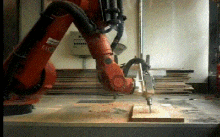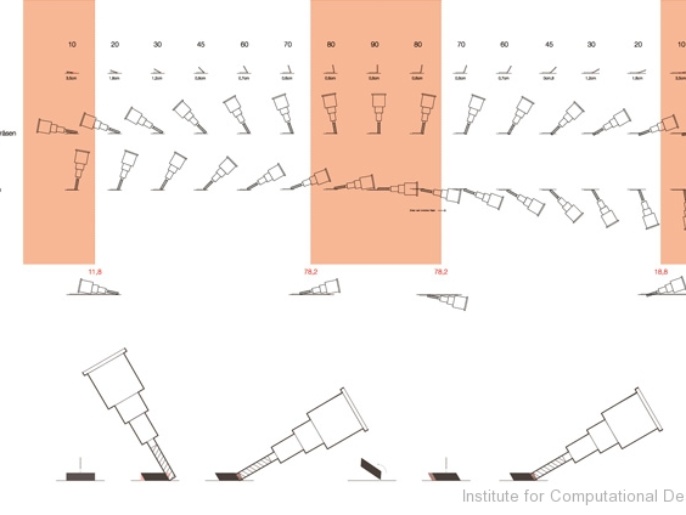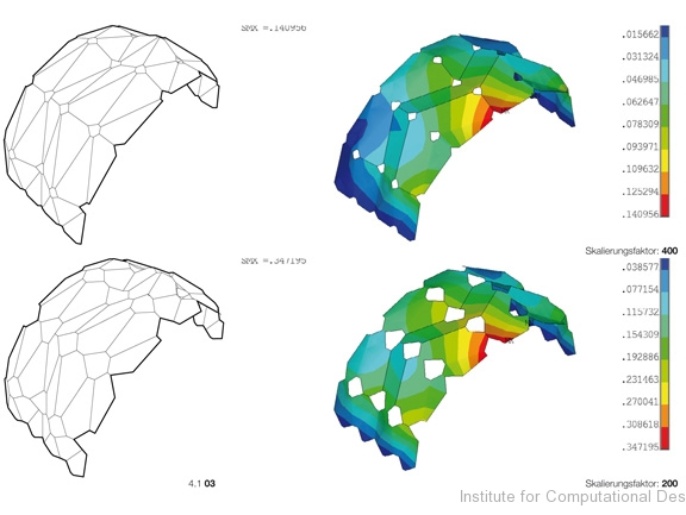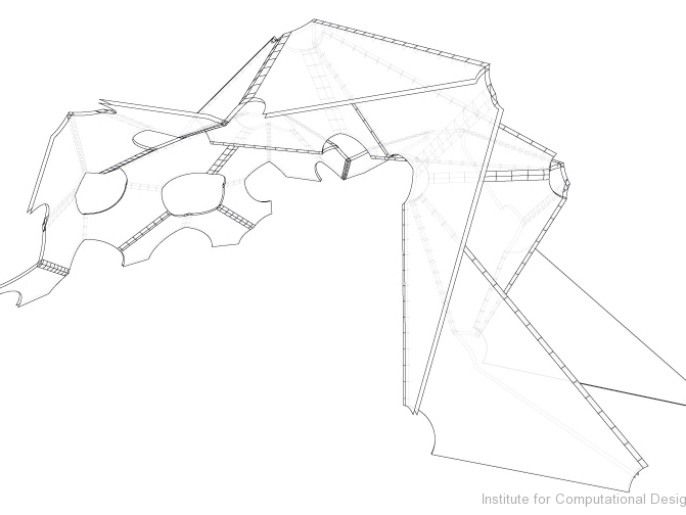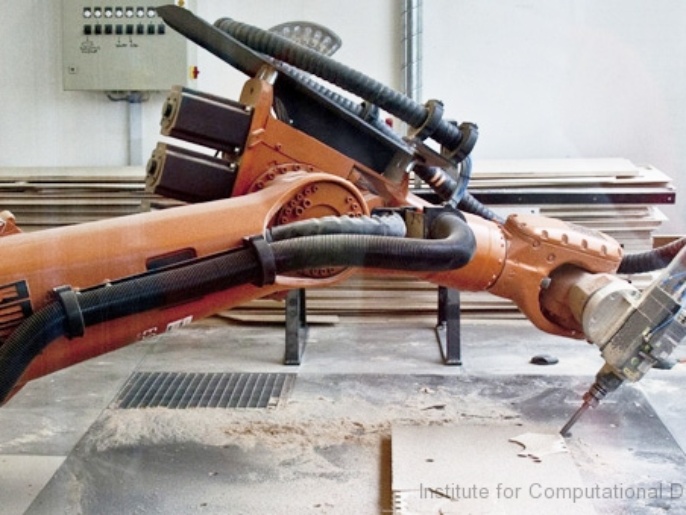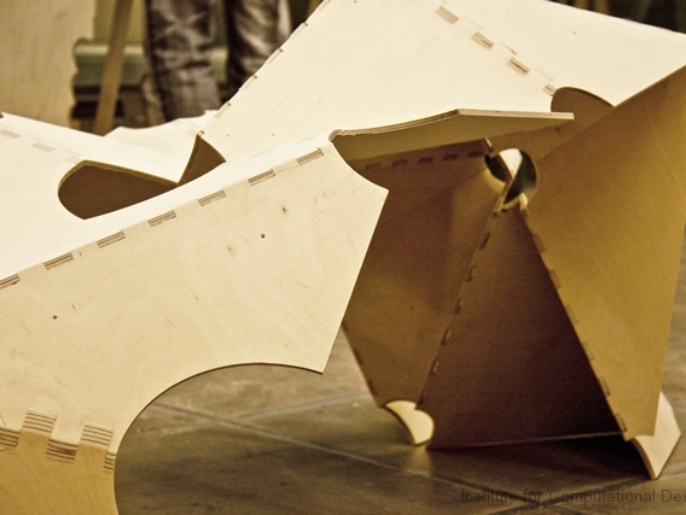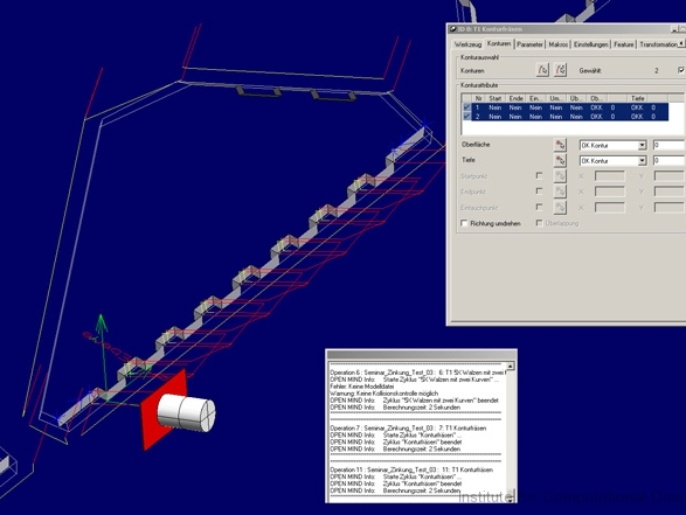The folded plate with robotically manufactured finger joints is a design system that is highly specific to the machine it was built with. From the beginning, the Seminar "Robotic Manufactured Material Systems" was encouraging a direct engagement with the robot and its specific possibilities and limitations.
In this project, the students were looking into folded plate wooden structures. Such structures are very strong, lightweight and allow for a variety of geometrical configurations. However, the rather complex miter joints within this structure require the designer to understand the geometry and the processes involved in the manufacturing. For example, the minimal and maximal angles within the folded plate, directly depend on the flexibility of the 6-axis robot and the geometry of its tools. A variety of scenarios was tested, analysed and subsequently fed into the information model that controls and generates the entire geometry of the structure.
At the same time, the students developed special finger joints for this structure in order to address the shearing force at the edges. Again, the geometrical limitations of these joints had to be considered within the information model, in order to find the correct compromise between the optimal overall geometry of the structure and its edge connections.


